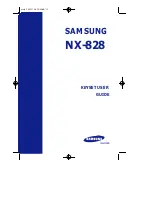
Triangulation Laser Sensors, RF605 Series
RF605 [Revision 2.0] 10th January 2011 valid for sensors with serial numbers 11000 and higher
5
Resolution, %
0.02 of the range
Temperature drift
0,02% of the range/
0
С
Max. sampling frequency, Hz
2000
Light source
red semiconductor laser, 660 nm wavelength
Output power, mW
≤0,95 mW
Laser safety Class
2 (IEC60825-1)
Output
interface
digital
RS232 (max. 460,8 kbit/s) or RS485 (max. 460,8 kbit/s)
analog
4…20 mA ( 500 Ω load) or 0…10 V
Synchronization input
2,4
– 5 V (CMOS, TTL)
Logic output
programmed functions, NPN: 100 mA max; 40 V max for output
Power supply, V
24 (9
…36)
Power consumption, W
1,5..2
E
nv
ir
o
nm
e
nt
res
is
ta
nc
e
Enclosure rating
IP67 ( for sensors with cable connector only)
Vibration
20g/10…1000Hz, 6 hours, for each of XYZ axes
Shock
30 g / 6 ms
Operation tempera-
ture
, °С
-
10…+60
Permissible ambient
light, lx
7000
Relative humidity
35-85%
Storage temperature,
°С
-2
0…+70
Housing material
aluminum
Weight (without cable), gram
60
6.
Example of item designation when ordering
RF605-X/D-SERIAL-ANALOG-IN-AL-
СС(R)-M
Symbol
Description
X
Base distance (beginning of the range), mm
D
Measurement range, mm
SERIAL
Type of serial interface: RS232 - 232, or RS485 - 485
ANALOG
Attribute showing the presence of
4…20 mA ( I ) or 0…10V ( U )
IN
Trigger input (input of synchronization) presence
AL
Programmed signal, which has triple purpose. It can be used as
1) logical output (
индикация наличия объекта в рабочем диапазоне);
2) line of mutual synchronization of two and more sensors
3) line of hardware zero setting
CC(R)
Cable gland - CG, or cable connector - CC (Binder 702, IP67)
Note 1:
R option
– robot cable
М
Cable length, m
Example
. RF605-105/500-232-I-IN-
СG-3 –base distance – 105 mm, range – 500 mm, RS232 serial port,
4…20mA analog output, trigger input is available, cable gland, 3 m cable length.
7.
Structure and operating principle
Operation of the sensors is based on the principle of optical triangulation (Figure
1.). Radiation of a semiconductor laser 1 is focused by a lens 2 onto an object 6. Radia-
tion reflected by the object is collected by a lens 3 onto a linear CMOS array 4. A signal
processor 5 calculates the distance to the object from the position of the light spot on the
array 4.
Summary of Contents for RF603 Series
Page 1: ......






































